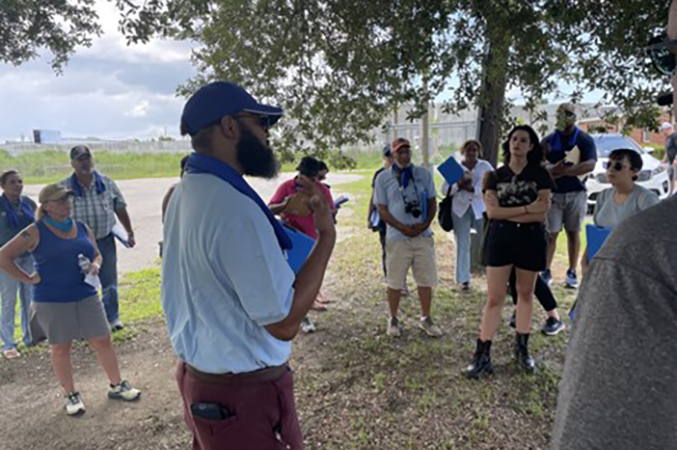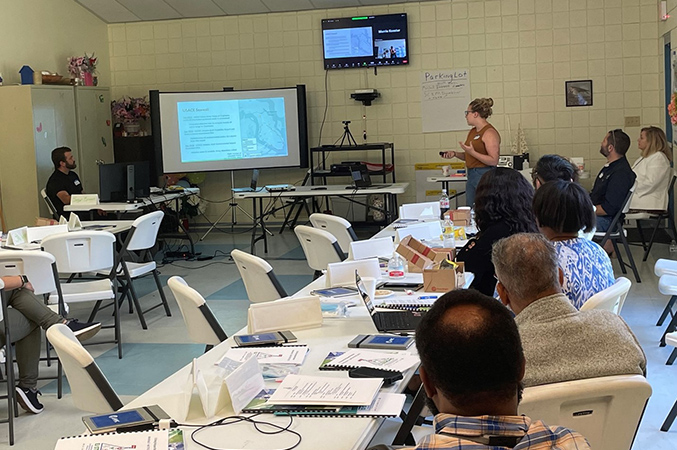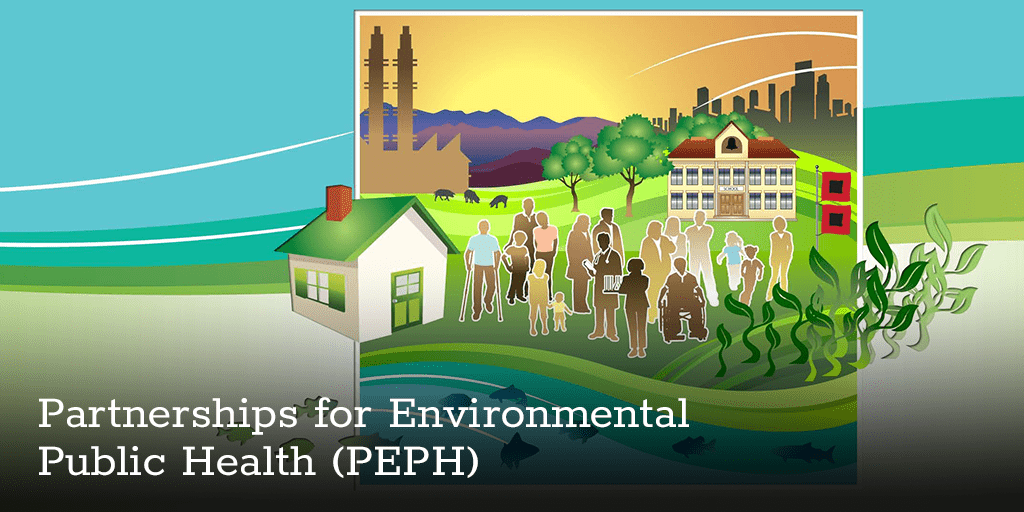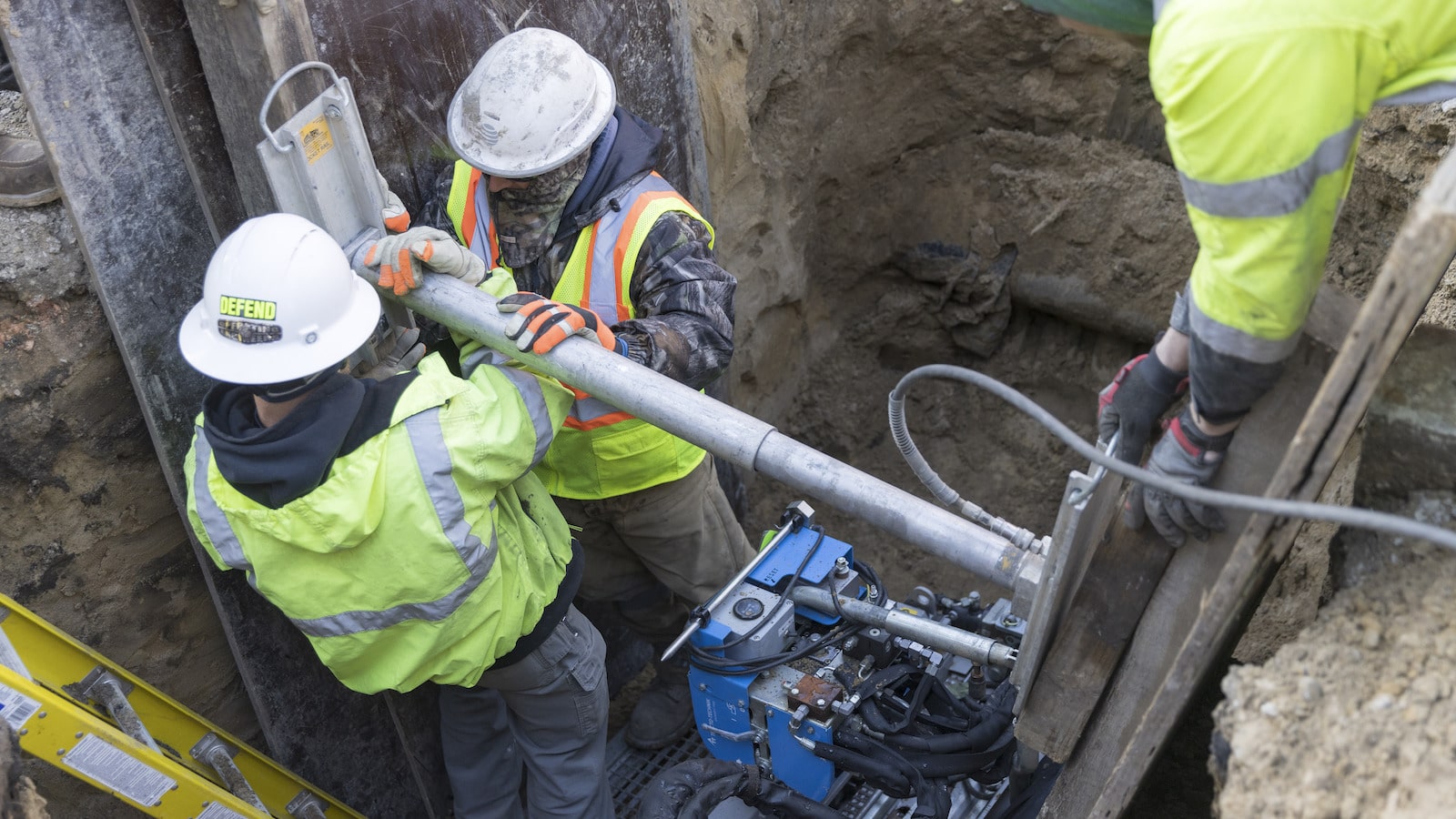Community concerns were included in the planning process for a new seawall in Charleston, South Carolina, thanks to researchers at the College of Charleston and the University of South Carolina who partnered with the Lowcountry Alliance for Model Communities (LAMC) and the South Carolina Department of Health and Environmental Control. The seawall is intended to mitigate impacts of storm surge flooding. A September 2022 paper describes the collaborative work.
“Charleston may be the first major East Coast city to propose building a seawall to adapt to the effects of climate change,” stated Paul Sandifer, Ph.D., of the College of Charleston. “As other communities, and coastal communities in particular, look for solutions to address risk of flooding, decision-makers need to hear from all community members to ensure everyone’s concerns are addressed without disadvantaging anyone.”
Sandifer is a co-investigator of the NIEHS-funded Center for Oceans and Human Health and Climate Change Interactions, headquartered at the University of South Carolina, and an Environmental Protection Agency-funded Environmental Justice Strong study, which provides training centered on disaster preparation and recovery to people from environmental justice communities.
U.S. Army Corps of Engineers’ Flood Risk Assessment
Charleston is located on a coastal peninsula in an area aptly known as the “Lowcountry.” As climate change raises sea levels and makes storms more frequent, Charleston is prone to increased flooding. In 2019, the city set a record with 89 flood events, or about one flood every four days.
Responding to the city’s risk, the U.S. Army Corps of Engineers (USACE), in partnership with the City of Charleston, assessed flood risk and determined possible mitigation measures. As a result of the initial assessment, USACE released a report in 2020 that proposed building a seawall around most of Charleston. However, the seawall will not include Charleston Neck, an area to the north of Charleston.
Charleston Neck is home to eight majority Black communities with a high concentration of low-income and elderly residents. These communities already experience environmental burdens from two nearby Superfund sites and heavy highway traffic. Initial exclusion from the USACE’s flood wall plan was seen by some residents as a potential environmental injustice to their communities.
An example of flooding in Rosemont, a Charleston Neck community. (Photo courtesy of Paul Sandifer)
Supporting Charleston Neck as an Environmental Justice Community
USACE initially suggested that Charleston Neck was not at the same risk of flooding as the rest of Charleston because it is at a higher elevation. However, some of its communities had experienced flooding, and residents were concerned that the seawall might worsen the issue. Charleston Neck residents and LAMC engaged with the academic partners beginning in 2021 to document flooding in preparation for Charleston’s flood planning efforts. LAMC is an organization based in North Charleston that addresses the community’s environmental justice concerns and other issues such as affordable housing and economic development.
“Residents had to advocate for themselves to demonstrate that their community floods just like the rest of Charleston,” reflected Omar Muhammad, Executive Director of LAMC. “The academic partnership was a great help in this effort, and it built on advocacy work underway in Charleston Neck.”

Omar Muhammad, Executive Director of LAMC, leading a workshop in the Rosemont community. (Photo courtesy of Paul Sandifer)
Facilitated by LAMC, the academic partners developed relationships with the Charleston Neck communities. Judith Taylor, a College of Charleston graduate student, led research by conducting interviews with open-ended questions, allowing residents to guide the conversation and provide input they found important; by participating in community meetings; and engaging in other activities. Taylor and the research team analyzed the conversations and grouped feedback into eight themes:
- Civic engagement
- Community connections
- Displacement
- Drainage
- Impacts of road infrastructure
- Increasing vulnerability
- Mistrust of government
- Sense of exclusion
Although the USACE study had not yet considered the Charleston Neck in its flood risk assessment when this study started in 2021, as the collaborative project moved forward, USACE expanded its risk assessment to include Charleston Neck. Recommendations for the area included flood mitigation actions such as raising homes that fall within Charleston city limits. But residents voiced concerns. For example, residents said that elevating homes could cause problems for the elderly who might struggle with access. They were also concerned the seawall might increase flooding in Charleston Neck and cause hazardous substances from nearby Superfund sites to enter communities.
Residents also expressed a strong sense of community and connection to landscape through activities such as fishing, accessing local parks, and engaging with others in the larger Charleston community. This feedback demonstrated the importance of the social and cultural aspects of the community and how these factors influence residents’ perceptions of risk.
Taylor presented the research results to community members at a public meeting to gather additional feedback from the community. Taylor developed a detailed story map of responses that was provided to the community along with other materials for future use.

College of Charleston graduate student Judith Taylor speaking at an Environmental Justice Strong workshop in Rosemont, a Charleston Neck community. (Photo courtesy of Paul Sandifer)
“We were interested to see the wide range of concerns raised by the community, but importantly, we saw a strong sense of connection to the social-ecological fabric of Charleston,” stated Dwayne E. Porter, Ph.D., a co-investigator of this study at the University of South Carolina. “This demonstrates the cultural importance of including the Charleston Neck communities and their residents in climate mitigation efforts.”
Residents intend to use the study results in their ongoing advocacy efforts to ensure their voices are heard in Charleston’s flood adaptation planning. For the academic researchers, this project has led to future opportunities for collaboration through the ongoing and expanding relationships with LAMC and the Charleston Neck communities.
“As other cities develop plans to adapt to climate change, we believe our work will help demonstrate the importance of hearing from all community members,” added Sandifer. “It is critical to ensure no one is harmed or left out of adaptation initiatives while others are protected.”
Source link
www.niehs.nih.gov



